Kantara Chapter One: Guliga Deva Forms and
Their Meaning in Kantara
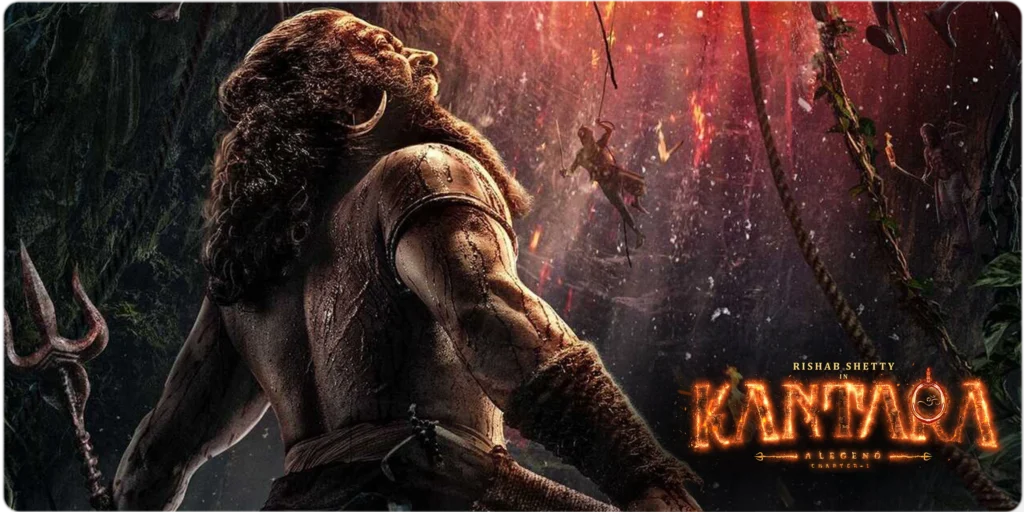
Introduction
Kantara Chapter 1 brings Tulunadu folklore alive through vivid depictions of Guliga Daiva, an ancient spiritual spirit who symbolizes both protection and retribution, who represents both protection and retribution in nature, justice, and human morality. Each manifestation of Guliga in Kantara Chapter 1 holds symbolic depth that speaks volumes about nature’s sacred balance with morality in society. Spooklorepedia decodes all these manifestations to understand their symbolic depth in Tulunadu culture’s ancient spiritual traditions.
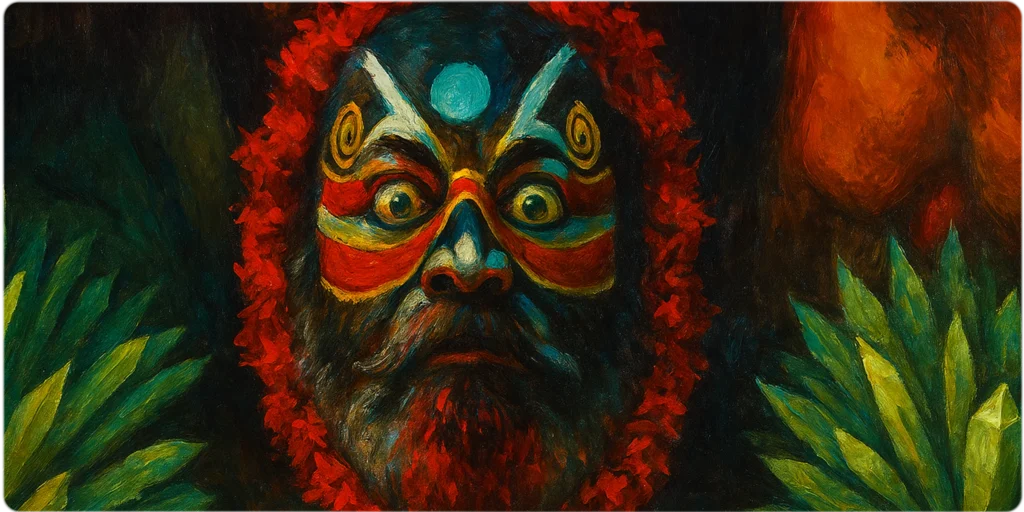
Rudra Guliga: The Fierce Enforcer of Justice
Rudra Guliga stands as one of the most formidable and impressive divine manifestations of Guliga in Tulunadu folklore, and his name itself blends two powerful forces. Rudra is the Vedic form of Lord Shiva which symbolizes destruction and purification; Guliga is an influential Daiva spirit revered as protector and punisher; Kantara Chapter 1 offers us insight into Rudra Guliga as it appears as manifestation that emerges when balance in nature and moral order are disturbed; hence his appearance not as guardian but as cosmic enforcer who mete out justice when greed, betrayal or arrogance jarringly upholding sacred equilibrium between man and nature.
Tulunadu’s Bhoota Kola traditions view Guliga as an auspice deity who ensures righteousness is upheld within their land, while in Kantara Rudra Guliga serves an intensified form as a guardian deity, signifying when divine tolerance ceased and punishment began; storms, fire and destruction often symbolise this change as forces of nature that purge impurities from nature and restore order. When there has been betrayal or when an ancient agreement between King and his people breaks apart then Rudra Guliga delivers justice – symbolizing that no human power stands above divine will.
Rudra Guliga symbolizes cosmic law as its uncompromising embodiment, reminding humanity that nature’s divinity should not simply be revered but respected as well. His presence in Kantara Chapter 1 bridges mythology and morality by echoing Tulunadu’s timeworn belief that when humanity strayed from righteousness, Rudra would emerge to restore balance.
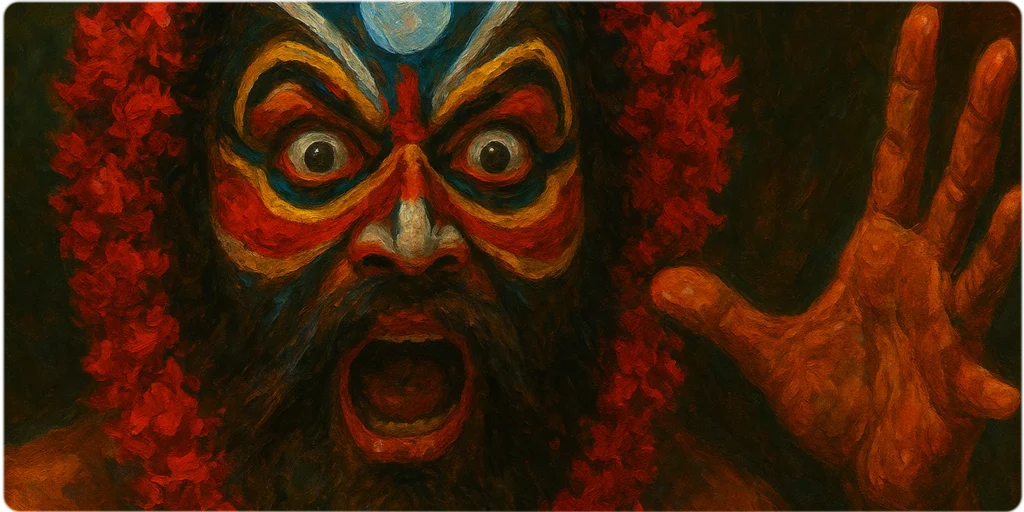
Rahu Guliga: The Shadow of Chaos and Divine Retribution
Rahu Guliga stands as a fierce and unpredictable manifestation of Guliga Daiva – an ever-evolving spirit who transcends protector and destroyer roles – within Tulunadu sacred folklore. The name itself unites two mythological elements – Rahu, the celestial shadow which devours both sun and moon during eclipses, and Guliga, the divine guardian spirit worshipped in Bhoota Kola tradition – to form this force that comes alive whenever deception or imbalance threaten moral order – creating chaos or illusion, illusion or cosmic upheaval within Tulunadu sacred folklore.
Tulunadu beliefs place Guliga at the forefront of their tradition as a protector and enforcer of justice, yet his Rahu aspect transcends this role to become an advocate for unseen evils and disturbances to natural harmony. According to local interpretations and Kantara Chapter 1, Rahu Guliga should be invoked whenever treachery and corruption infiltrate sacred pacts – symbolizing moments when even divine patience starts waning, chaos takes control allowing truth to emerge out of shadows signifying that his arrival signals an unmasking of wrongs as an eclipse before dawn of retributive justice!
Rahu Guliga stands as both visual and symbolic representation of restoration; his presence in Kantara underscores its core belief: when human greed overshadows divine justice, darkness itself becomes its medium of justice and balance can be restored through it. Tulunadu folklore reminds us that not all darkness is bad; sometimes it’s necessary for healing balance.
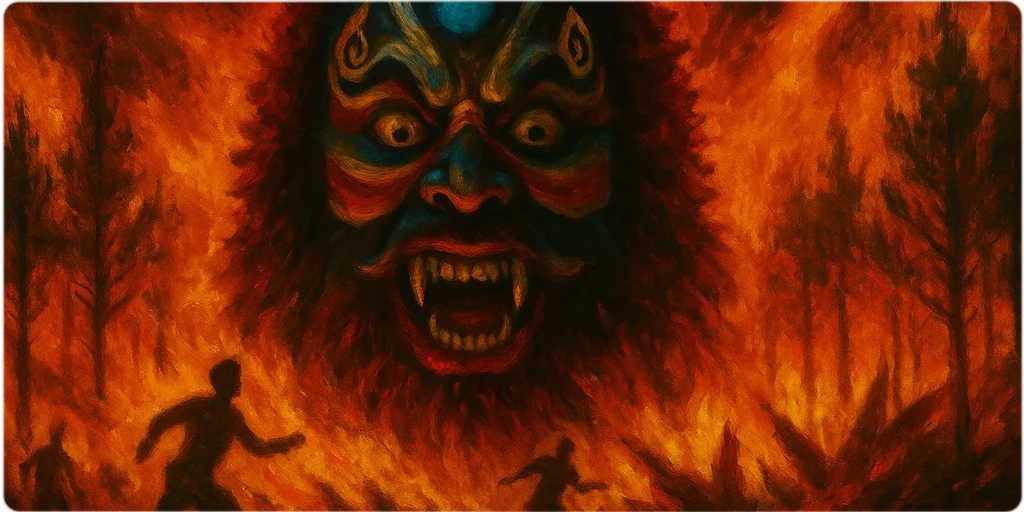
Agni Guliga: The Fire Bearer of Purification and Wrath
Kantara Chapter 1 introduces Agni Guliga as one of the many avatars of Guliga Daiva, one that symbolizes fire itself – hence its name “Agni” from Sanskrit meaning fire – representing purification, ritual intensity, constructive and destructive power, purging corruption from existence and confronting anything that corrupts it. Not content to simply burn away unwanted elements in life’s fabric, Agni Guliga serves to purge, cleanse and confront that which threatens its order – not simply burning but confronting anything which has disrupted nature’s order with unintentionally alteration or corruption by confronting those whom she encounters!
Fire holds ancient and sacred significance within Tulunadu folklore: it consumes impure things, illuminates hidden ones and brings about new beginnings. Fire plays an integral role in many Bhoota Kola traditions (spirit worship ceremonies) offerings, torches and even invoked ritually as part of religious invocation rituals which include Agni Guliga being invoked and providing elemental force with ritual mantras; searing heat produced by smoke and flame; sharp judgement that only fire can bring.
Kantara’s Agni Guliga serves as an agent of purification among Guliga’s many forms, when injustice has reached such depths that only its intensity of fire can cut through falsehood and corruption. It comes to life during times of crisis: when boundaries have been violated or promises broken or sacred pacts (between people, land, spirit) compromised through greed or deceit; its role is not only punishing but restoring, burning away what decayed so something new may emerge from decayed places!
Agni Guliga can be seen visually and symbolically as flames licking at darkness, red and orange flickers in the night, possibly ash or embers after its passage, followed by rituals including ceremonies, burning offerings, the use of fire in chants or torches or flames and possibly self-immolative symbolic acts (not literal trials by fire). Agni Guliga’s cleansing aspect is apparent here – sins, false oaths and broken trust may all be burned away by its purifying flames.
Agni Guliga is not solely about destruction; as in many fire myths, she brings life as well. Fire creates warmth, light, and renewal while Agni Guliga provides healing; she can rekindle faith between people and their land and spirits that has been dimmed due to corruption; this avatar of Kantara symbolizes that though Guliga punishes individuals it ultimately seeks moral order restoration so as to cleanse and rejuvenate communities – unlike its counterpart in China which would simply punish simply out of spite!
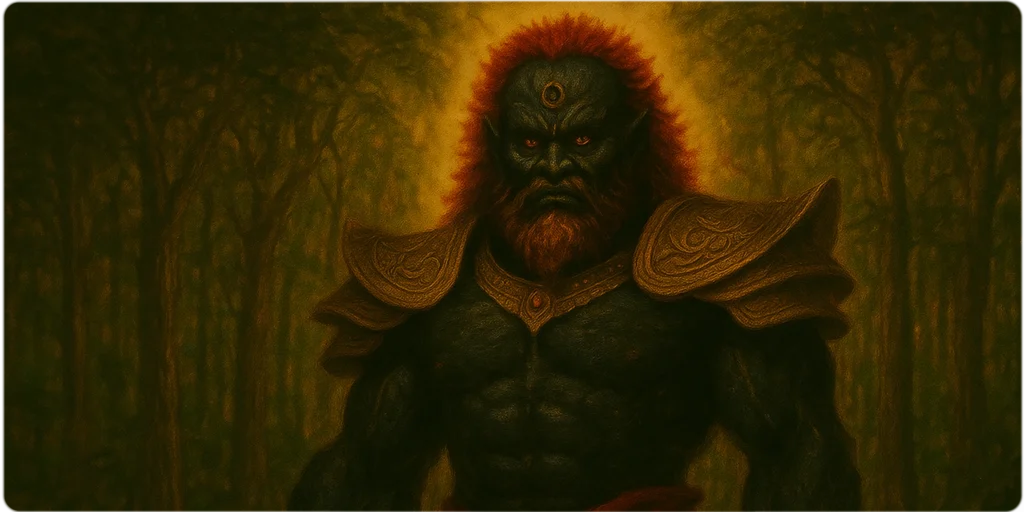
Swami Raj Guliga: The Royal Guardian of Divine Authority
Swami Raj Guliga stands out among the various forms of Guliga found in Tulunadu folklore as one who best personifies royalty, order, and divine governance. The title itself (Swami) meaning Lord and Raj meaning King, signifies regal authority not through chaos but presence, command, and unwavering vigilance; Swami Raj Guliga serves as guardian-king who oversees boundaries between mortal and sacred, upholding justice by upholding truthfulness with every oath taken within its boundaries while upholding justice not through brutality or chaos but through presence, command, unwavering vigilance; Swami Raj Guliga acts as guardian king to uphold justice while upholding justice through presence command and unwavering vigilance while keeping oaths taken remains true and just spiritual traditions of Tulunadu revere Guliga both as protector and punisher; an embodiment of law who ensures its enforcement with dignity rather than fury. His Raj aspect further takes on ruler-like qualities by upholding justice with grace rather than fury, thus being invoked during rituals to safeguard villages, farmlands and sacred groves with disciplined discipline ensuring stability among divine forces themselves. Rudra Guliga burns with righteous fury while Rahu Guliga embodies chaos; Swami Raj Guliga however governs with disciplined dignity ensuring balance among divine forces within divine forces themselves while Rudra Guliga burns with righteous fury while Rahu Guliga symbolizes chaos whereas Swami Raj Guliga reigns with disciplined dignity and balance among divine forces themselves ensuring order among divine forces themselves to maintain order among divine forces themselves ensuring order among divine forces themselves thereby maintaining order within divine forces themselves.
Kantara Chapter 1 depicts this form as the sovereign overseer among Guliga’s avatars – an earthly authority who watches over humanity like a monarch does his realm. Adorned in royal ornaments and emanating an aura of command, Swami Raj Guliga represents stability during chaos-prone times; not out for revenge but to remind mankind to keep their sacred duties to land, ancestors, and divine forces that protect them.
Swami Raj Guliga personifies the spirit of righteous leadership, one which commands respect, upholds moral order, and restores dignity to man-nature relationships. Both in Tulunadu’s living folklore and Kantara’s mythic tapestry he is seen as an intermediary who ensures even gods abide by principles of justice.
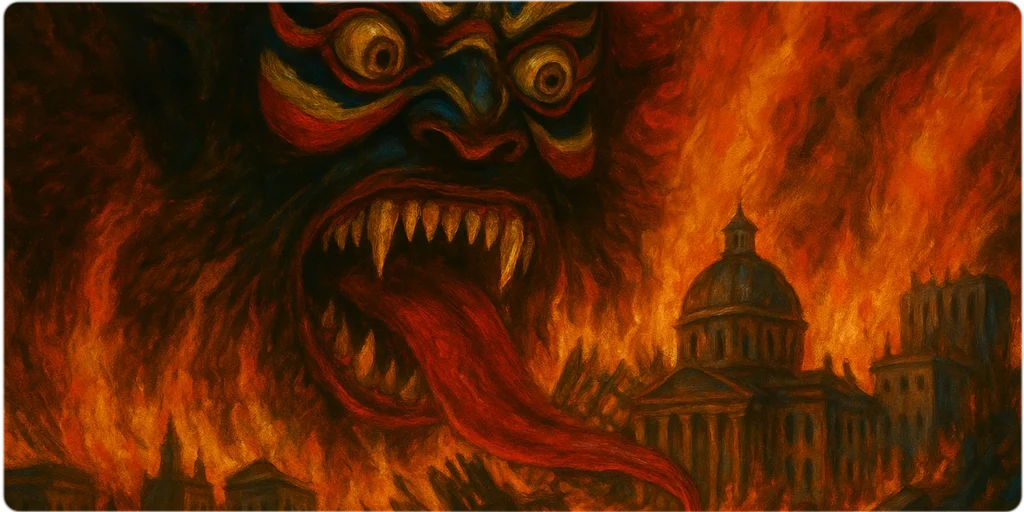
Netra Guliga: The All Seeing Eye of Blood, Vision, and Divine Hunger
Netra Guliga is one of Tulunadu’s ancient folklore’s more unnerving forms of Guliga; an expression of divine vision that comes bundled with blood sacrifice and an intense hunger for truth. Netra literally means “Eye”, symbolizing its gaze that penetrates illusion and exposes every hidden deceit – though Netra Guliga takes this process one step further: its eyes gaze through blood itself! According to legend, this form only arises when sacred balance has been violated or betrayals occur and justice demands not only revelation but blood-borne offerings be made before order can be restored – something the eyes don’t do!
Kantara Chapter 1 depicts Netra Guliga as a form of Guliga that personifies the primal link between sight and sacrifice, specifically the belief that divine eyes must witness suffering to cleanse it as an embodiment of sight-sacrifice ritualism. Netra Guliga serves both functions, acting both as seer and devourer with each drop representing surrender of mortal corruption to divine eyes. Ritually this form may be invoked through fiery dances, drums and the offering of animal blood. Each drop representing surrender of mortal corruption to divine eyes.
Netra Guliga operates in secret and shadow, unlike Rudra and Swami Raj Guliga which wield harsh justice and royal command respectively. It observes silently while perceiving lies even those who appear pure-hearted may conceal. When it awakens, all deception cannot abide; every false promise or betrayal of land comes into the light; yet once its hunger for sacrifice has been fulfilled, peace returns, as though cleansing had taken place on earth itself.
Netra Guliga stands as both an imposing and revered reminder that Tulunadu’s spiritual cosmos views vision itself as divine fire. Being seen by Netra Guliga means surrendering oneself before an unsparing gaze from above and being cleansed through ancient rituals of truth and bloodshed.
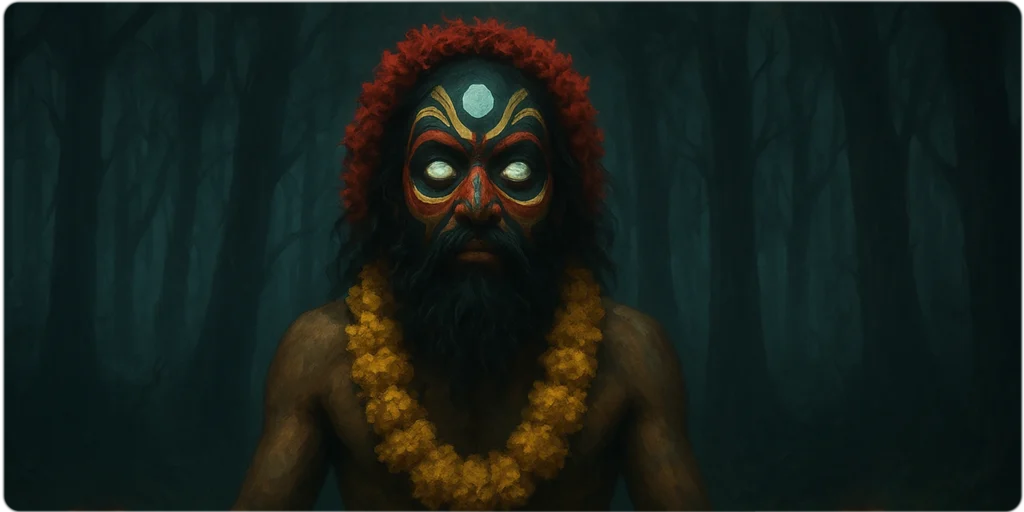
Tantrika Guliga: The Mystical Guardian of Esoteric Power
Tantrika Guliga stands out among Tulunadu’s sacred folklore as an embodiment of special knowledge and mystic authority. Influenced by Tantra tradition it is serving as an intermediary between humanity and divinity through mantras, yantras and rituals that balance cosmic energies. Many believe that Guliga may impose royal authority through violence or chaos. While, Tantrika Guliga employs unseen energies responsibly while safeguarding sacred knowledge responsibly.
Tantrika Guliga can be called upon through ritualized tantric ceremonies that include chants, symbolic offerings and performing sacred rites. At Bhoota Kola ceremonies, the Dev is summoned to guide, protect and bless communities, while acting as mediator between mortals and divine forces. It symbolizes both power and discipline inherent to spiritual mastery. Tantrica Guliga reminds us that true strength lies not just in physical might or fury alone. It is the understanding of wisdom and tapping into hidden currents within our universe.
Tantrika Guliga symbolizes the mysticism and depth of Tulunadu folklore. It symbolizes enigmatic power who ensures divinities do not get misused or forgotten, keeping sacred harmony alive between visible and unseen realms.
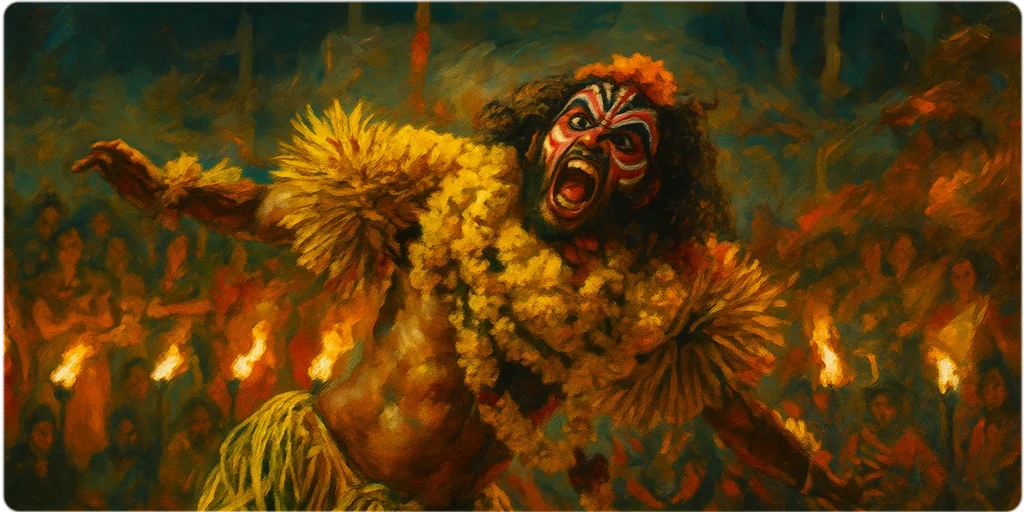
Kathaka Guliga: The Storyteller, Keeper of Oral Tradition, and Embodiment of Mystery
Kathaka Guliga stands out among Tulunadu’s rich spiritual legacy as an embodiment of storytelling, cultural memory and mysterious power. Kathaka is a sacred form, playing an essential role as the narrator of ancestral tales and myths as well as moral lessons. Kathaka Guliga transcends simply providing wisdom; rather it embodies darkness and mystery as well. While other manifestations of Guliga use force or violence to operate; Kathaka Guliga guides her community with insight revealed through words; connecting today’s world to history’s hidden depths.
Kathaka Guliga can be called upon during Bhoota Kola rituals by recreating paddanas (traditional songs that recount deities’ or heroes’ exploits), serving as sacred acts to reveal hidden knowledge, maintain traditions, and teach lessons beyond what can be perceived at first glance. Kathaka Guliga serves both cultural memory and mystery preservation functions in these ceremonies; reminding communities that some truths can only be known through reflection and reverence for what lies beyond our physical world.
Kathaka Guliga storytelling serves both illumination and shadow, protecting Tulunadu’s moral and spiritual fabric by channeling ancestral voices across generations, conveying instructive lessons that are both instructive, enigmatic, and profound – Acting both as guide and challenge for Tulunadu residents alike.
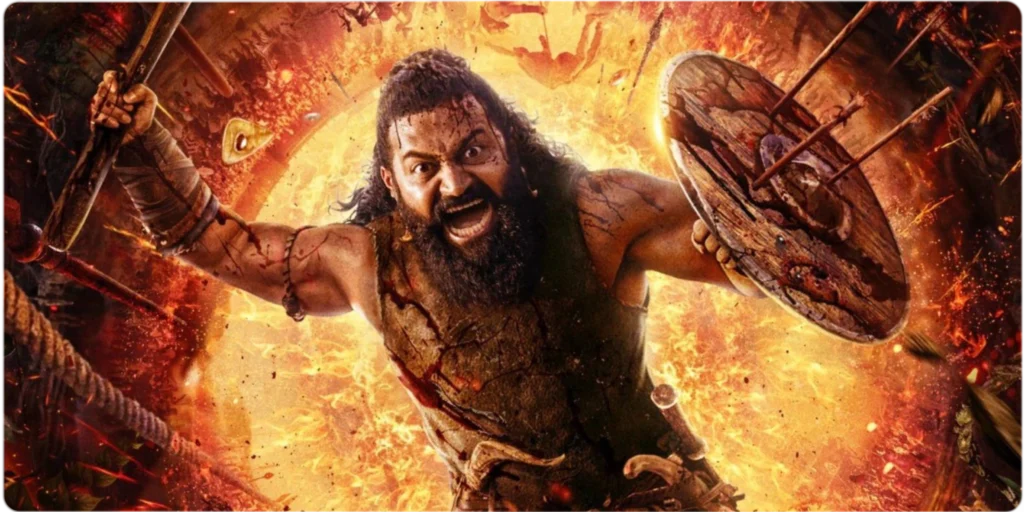
Conclusion
Guliga in Tulunadu folklore is an intricate representation of nature’s spirit: justice, chaos purification authority insight mysticism storytelling Each avatar symbolizes a specific aspect of God, depicting how morality, culture and nature all work in conjunction in shaping the spiritual awareness of their region. Rudra Guliga and Netra Guliga offer two extreme forms of Rudra’s intense anger; Agni Guliga offers purification through fire; Swami Raj Guliga displays his royal authority; Tantrika Guliga offers esoteric mastery while Kathaka Guliga provides dark mystery narrative. These forms work collectively to balance human society with divine order.
Together, these elements illustrate that Guliga Daiva is more than simply an enforcer; it serves as a living embodiment of Tulunadu’s heritage by upholding law, culture and spiritual wisdom through ritual, myth and storytelling forms that continue to guide, challenge and protect communities; this evidences how divine acts through not just visible power but also insight, mystery and the sacred duty to uphold dharma.

